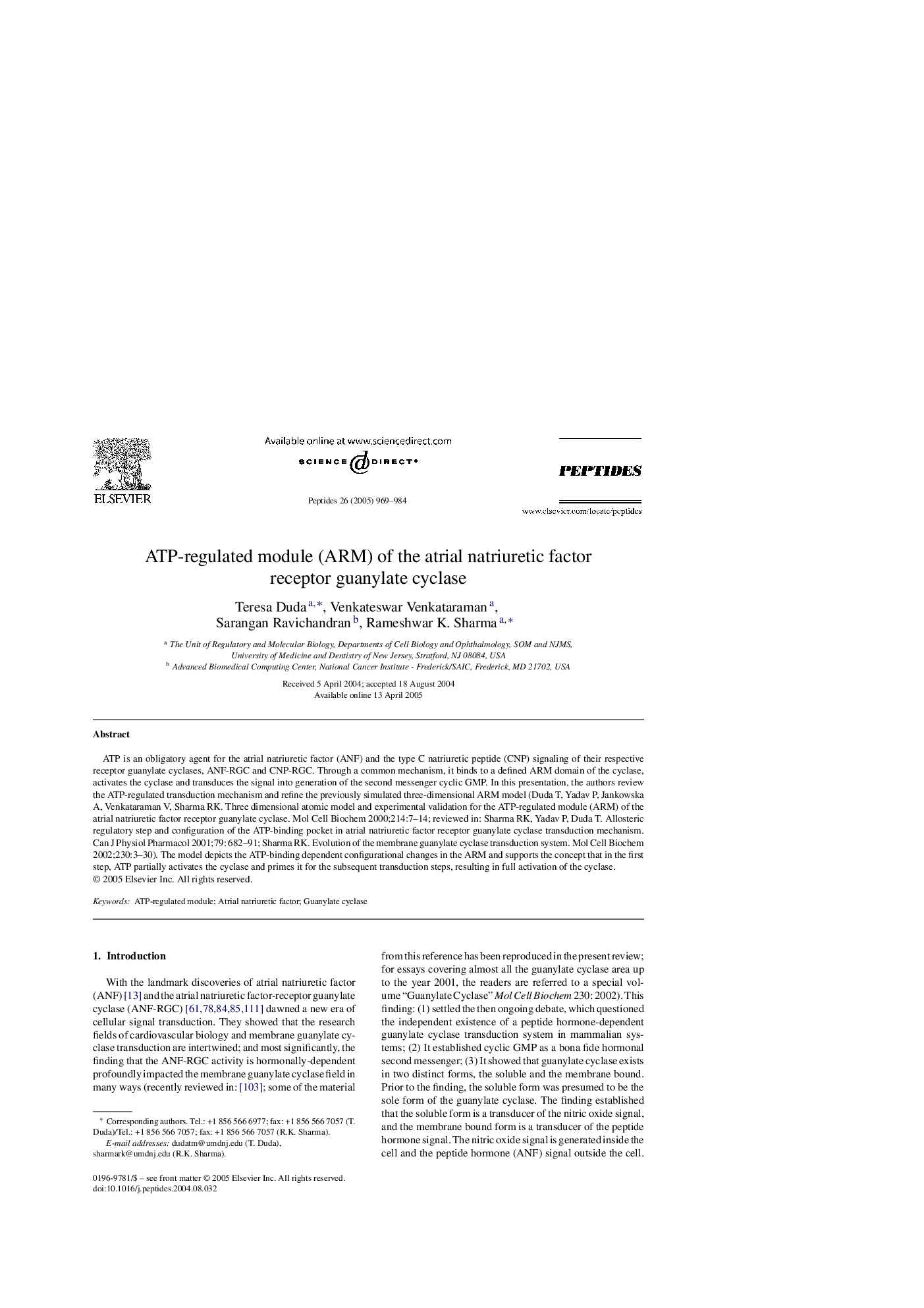| Article ID | Journal | Published Year | Pages | File Type |
|---|---|---|---|---|
| 10836243 | Peptides | 2005 | 16 Pages |
Abstract
ATP is an obligatory agent for the atrial natriuretic factor (ANF) and the type C natriuretic peptide (CNP) signaling of their respective receptor guanylate cyclases, ANF-RGC and CNP-RGC. Through a common mechanism, it binds to a defined ARM domain of the cyclase, activates the cyclase and transduces the signal into generation of the second messenger cyclic GMP. In this presentation, the authors review the ATP-regulated transduction mechanism and refine the previously simulated three-dimensional ARM model (Duda T, Yadav P, Jankowska A, Venkataraman V, Sharma RK. Three dimensional atomic model and experimental validation for the ATP-regulated module (ARM) of the atrial natriuretic factor receptor guanylate cyclase. Mol Cell Biochem 2000;214:7-14; reviewed in: Sharma RK, Yadav P, Duda T. Allosteric regulatory step and configuration of the ATP-binding pocket in atrial natriuretic factor receptor guanylate cyclase transduction mechanism. Can J Physiol Pharmacol 2001;79: 682-91; Sharma RK. Evolution of the membrane guanylate cyclase transduction system. Mol Cell Biochem 2002;230:3-30). The model depicts the ATP-binding dependent configurational changes in the ARM and supports the concept that in the first step, ATP partially activates the cyclase and primes it for the subsequent transduction steps, resulting in full activation of the cyclase.
Related Topics
Life Sciences
Biochemistry, Genetics and Molecular Biology
Biochemistry
Authors
Teresa Duda, Venkateswar Venkataraman, Sarangan Ravichandran, Rameshwar K. Sharma,
